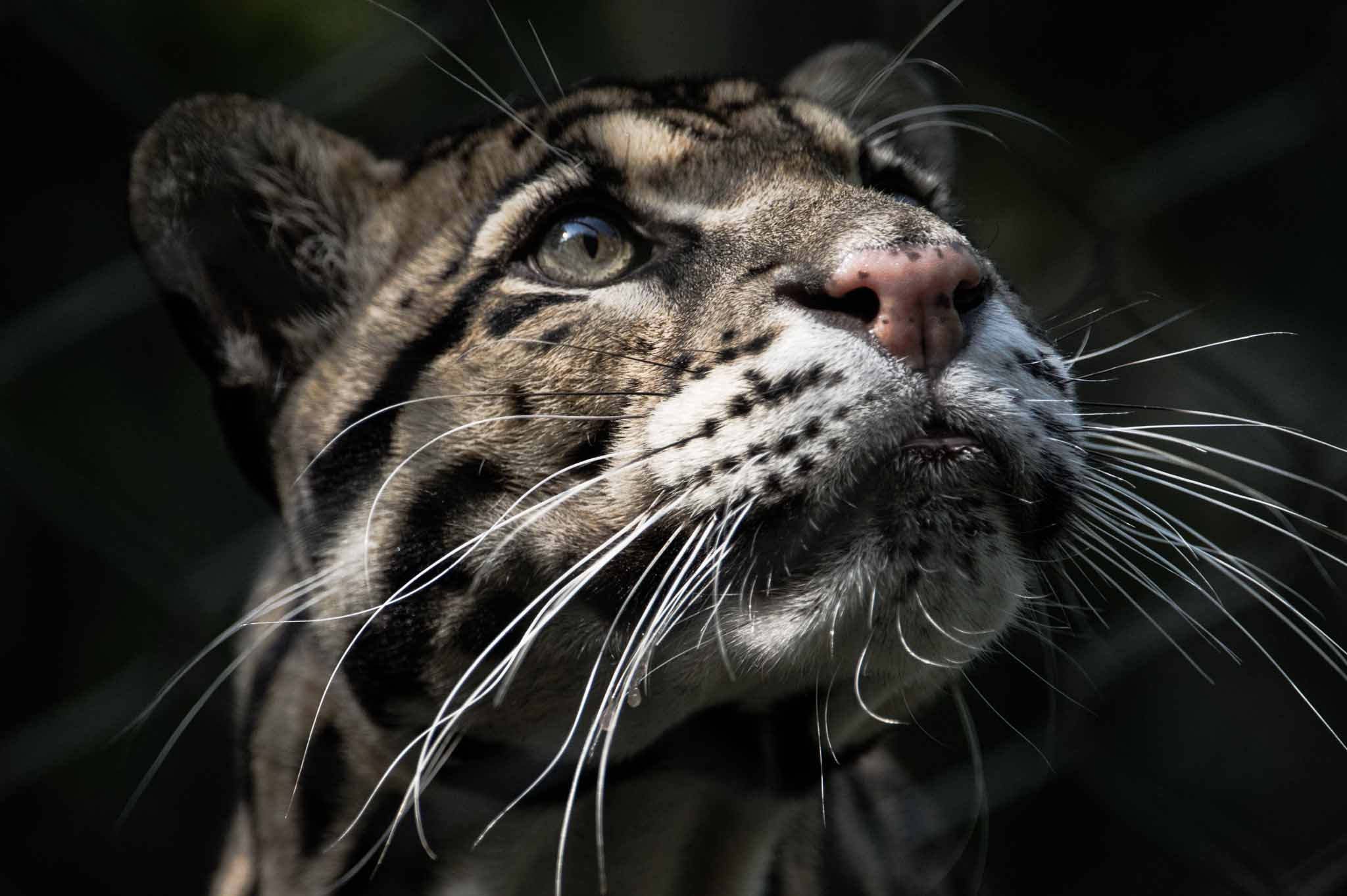13-year-old Clouded Leopard Dies at the National Zoo
During a routine medical exam yesterday, Nov. 24, veterinarians at the Smithsonian's National Zoo discovered that their male clouded leopard had life-threatening tumors. Keepers had noticed that Tai, a 13-and-a-half-year-old male, had been chewing gingerly on the right side of his mouth for the past week and changed his food consumption, which prompted keepers to notify the veterinarian team. A decision was made to perform an oral-health assessment and his annual health checkup simultaneously because anesthetizing animals can pose risks.
During the exam, radiographs revealed that Tai had a large amount of fluid within his chest causing several of his lung lobes to collapse. After removing some of the fluid from his chest, veterinarians found several masses of varying sizes in Tai's chest. These clinical signs pointed to an aggressive malignant tumor. Because of the seriousness of the tumors, veterinarians elected to humanely euthanize Tai.
Tai was one of the first residents on Asia Trail when it opened in 2006. He and his partner, Mook, the Zoo's female clouded leopard, lived well together but never had any offspring.
One of things I enjoyed most about working with Tai was when we did the visitor education demos, said Jenny Spotten, clouded leopard keeper. Very few visitors have ever seen a clouded leopard, and there was Tai, in all his glory, mesmerizing the audience as an ambassador for his species and conservation efforts. He had a lot of attitude and spunk, and he certainly loved meatballs.
The Zoo recently posted a video about training Tai to participate in cheek-swab procedures.
Smithsonian Conservation Biology Institute (SCBI) scientists have been working with clouded leopards since 1978. Earlier this summer, a litter of clouded leopard cubs was born as the result of an artificial insemination in Thailand. Pierre Comizzoli, reproductive physiologist at SCBI, performed the artificial insemination. It was the first successful procedure performed on a clouded leopard outside of the United States. Historically, scientists have had difficulty breeding clouded leopards because of male-female aggressions. They found that males would often kill females during introductions for breeding. SCBI scientists demonstrated that raising males and females together from a very young age greatly reduced the chances of aggression. Scientists and the Species Survival Plan for clouded leopards can then pair males and females determined to be good genetic matches when they are only a few weeks old, although this is not always possible.
Clouded leopards are listed as vulnerable on the International Union for Conservation of Nature's Red List of Threatened Species. Threats to the species include habitat fragmentation, deforestation and illegal wildlife trafficking. They are threatened because there is a high demand for their attractive pelts.
According to statistics maintained by the Association of Zoos and Aquariums the median life expectancy of a male clouded leopard in human care is about 7 years. A final pathology report will provide more information on Tai. Zoo visitors can see Mook on Asia Trail.
Caption: Tai, a clouded leopard at the Smithsonian's National Zoo.
Photo: Janice Sveda/Smithsonian's National Zoo
